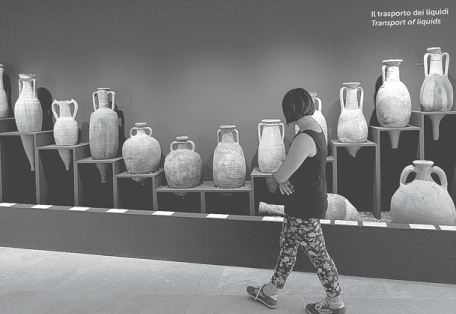Thank ancient Romans for 'street food'
By Laure Brumont ( China Daily ) Updated: 2015-08-08 13:04:04Grabbing something hot and tasty on the move? You have the ancient Romans to thank. "Street food" was their invention, generally enjoyed with wine, gambling or even prostitutes.
Food on the go was an integral part of daily life in the empire, from nibbling on salted peas while watching gladiators battle in the Colosseum, to grabbing a sausage or fried fish snack after a dip in Rome's famed baths.
Feeding an empire of some 50 million people was no mean feat, as an exhibition in the Italian capital sets out to show in conjunction with Milan's 2015 Universal Exhibition on the themes of food and agriculture, running until the end of October.
Food scarcity could trigger uprisings or even topple leaders, a risk Emperor Augustus (63 BC to 14 AD) was unwilling to take. He made importing wheat, oil, wine and other foodstuffs a top priority, changing the face of Roman dining.
A typical day kicked off with the jentaculum, or breakfast-salted bread, dried fruit and eggs washed down with milk or wine.
That was followed by a quick prandium, or lunch, grabbed at the thermopolia-forerunners of fast food restaurants-or popinae, wine bars frequented by the lower classes where customers could grab a bite, dabble in a bit of gambling, or pop upstairs for some sex.
And after an afternoon's work or session at the thermal baths, the rich would throw sumptuous banquets, dining on anything from peacock tongues to baked dormice.
The rest of the population supped on fresh vegetables, stews and, occasionally, meat.
|
|
|
|
|
|
|
|


























 Raymond Zhou:
Raymond Zhou: Pauline D Loh:
Pauline D Loh: Hot Pot
Hot Pot Eco China
Eco China China Dream
China Dream China Face
China Face






